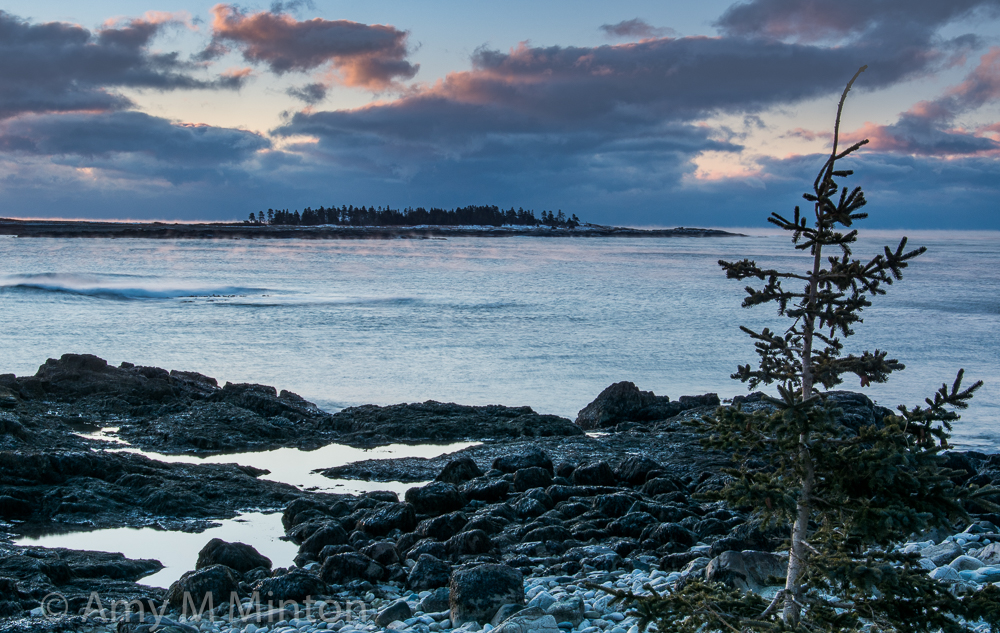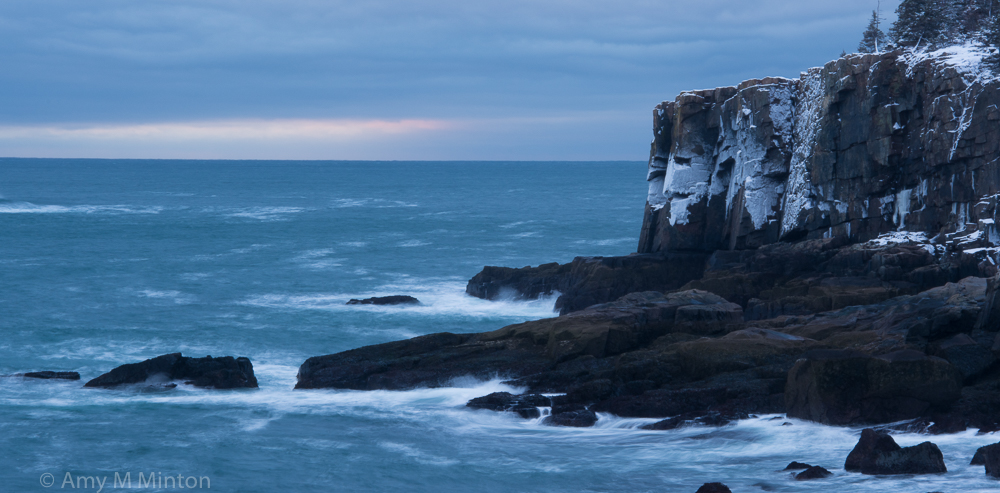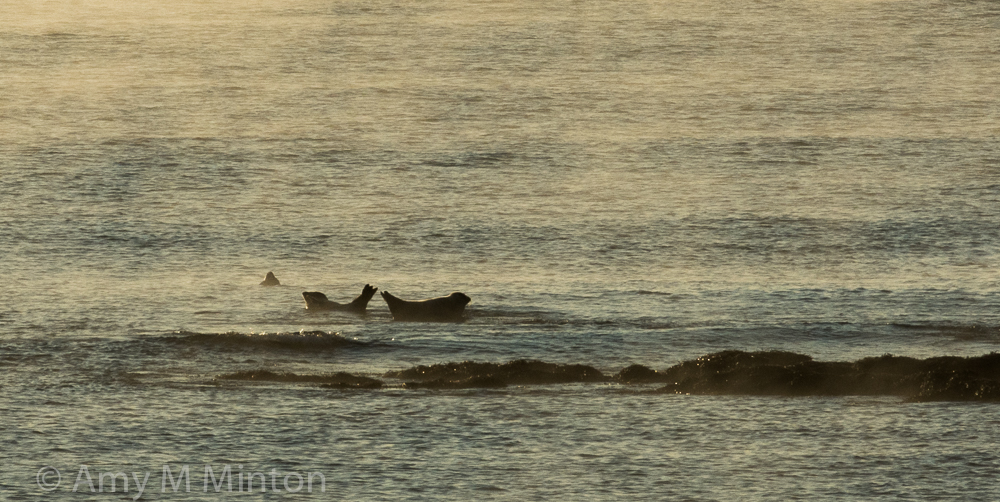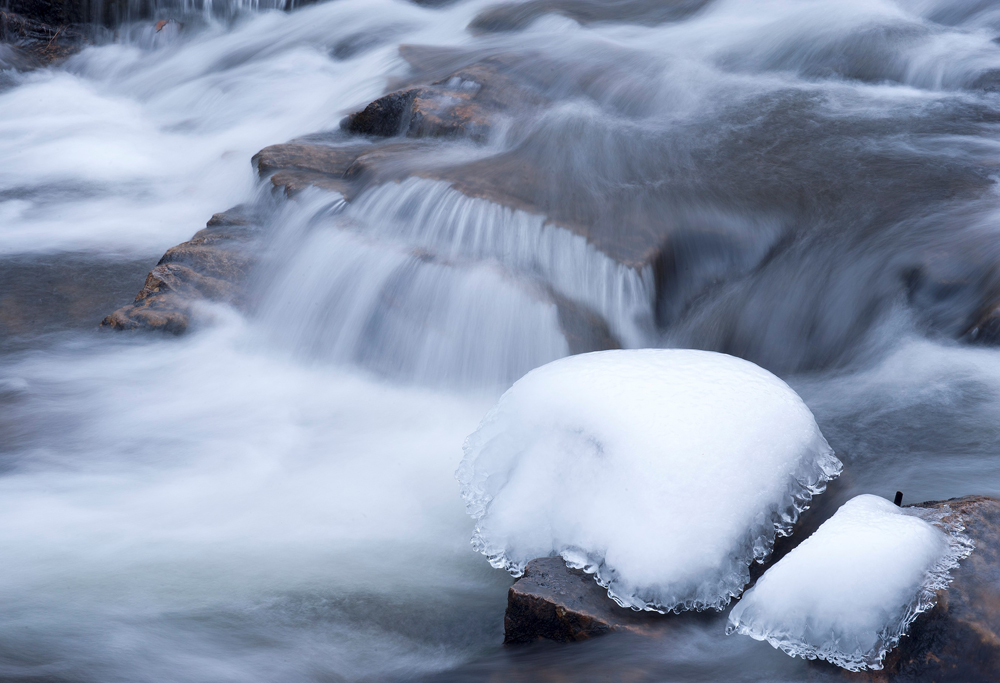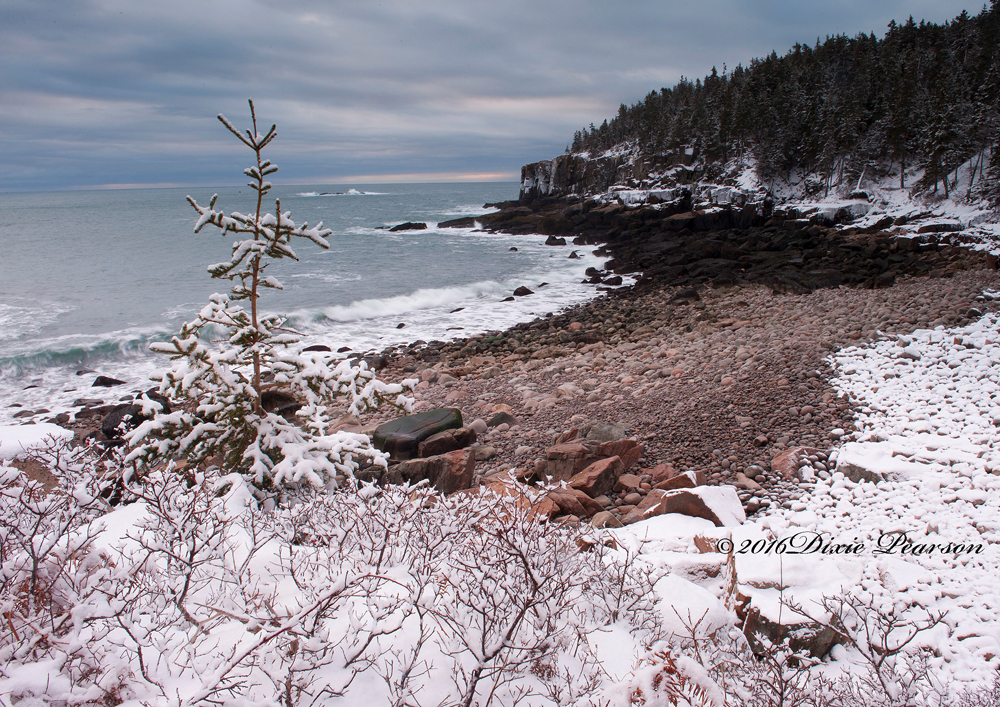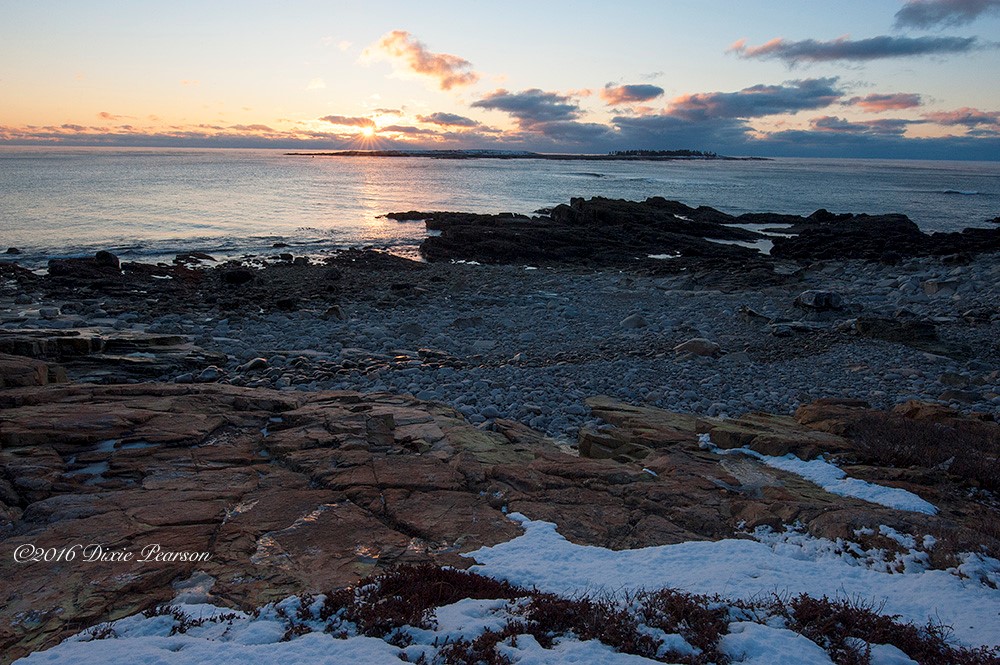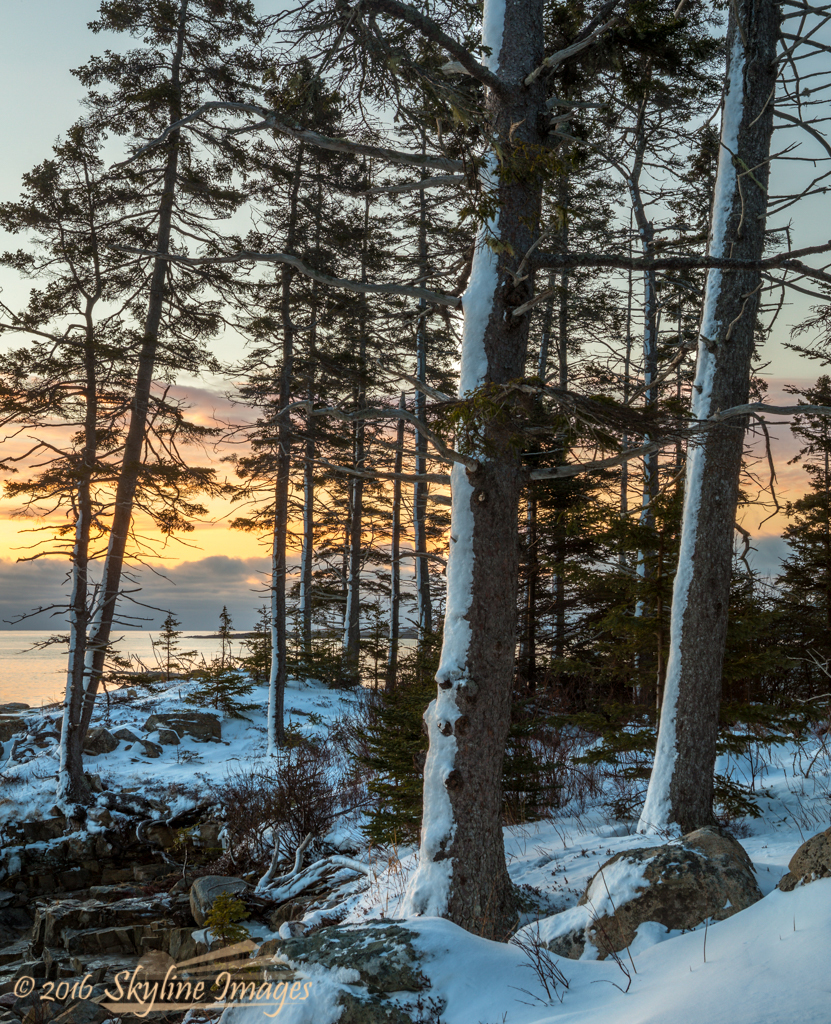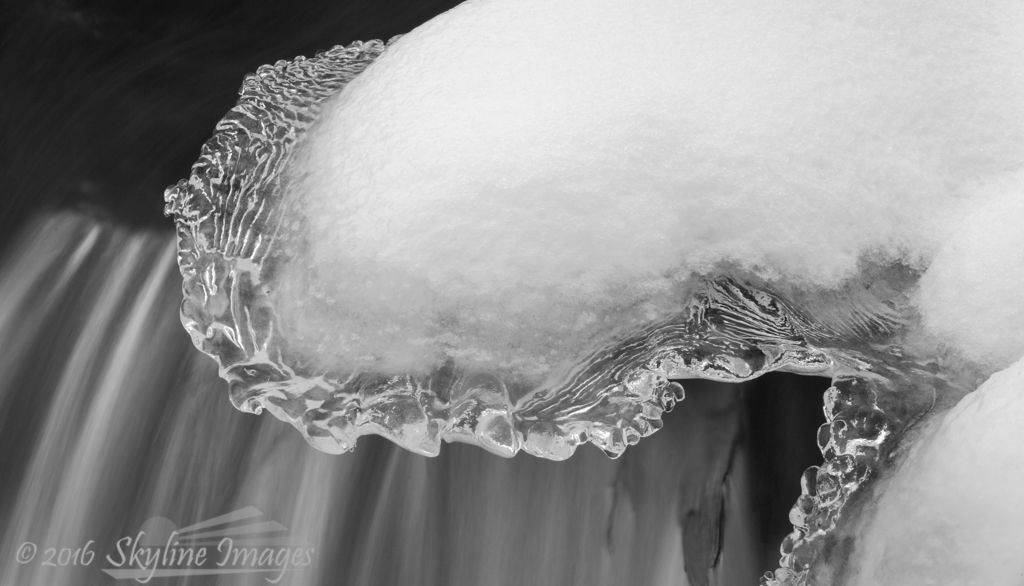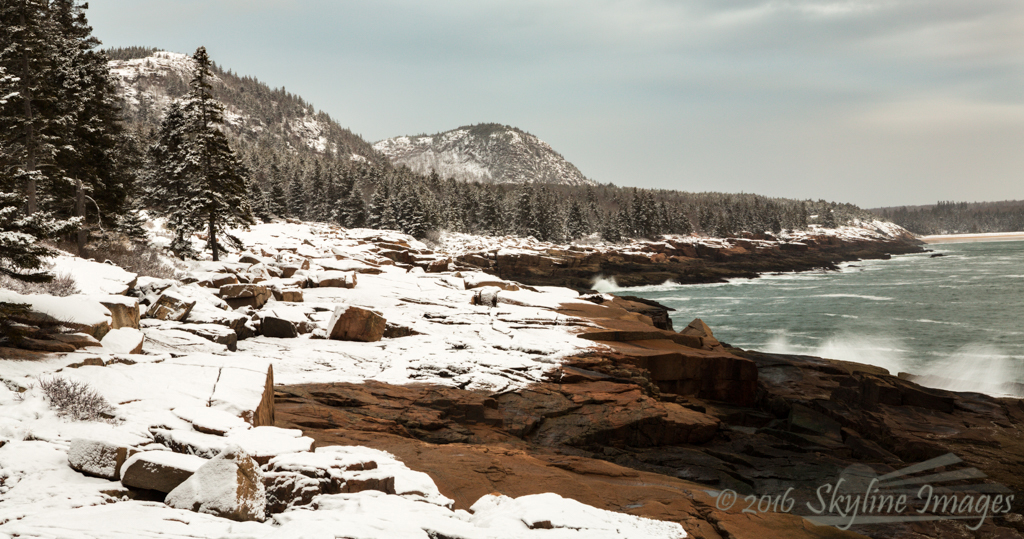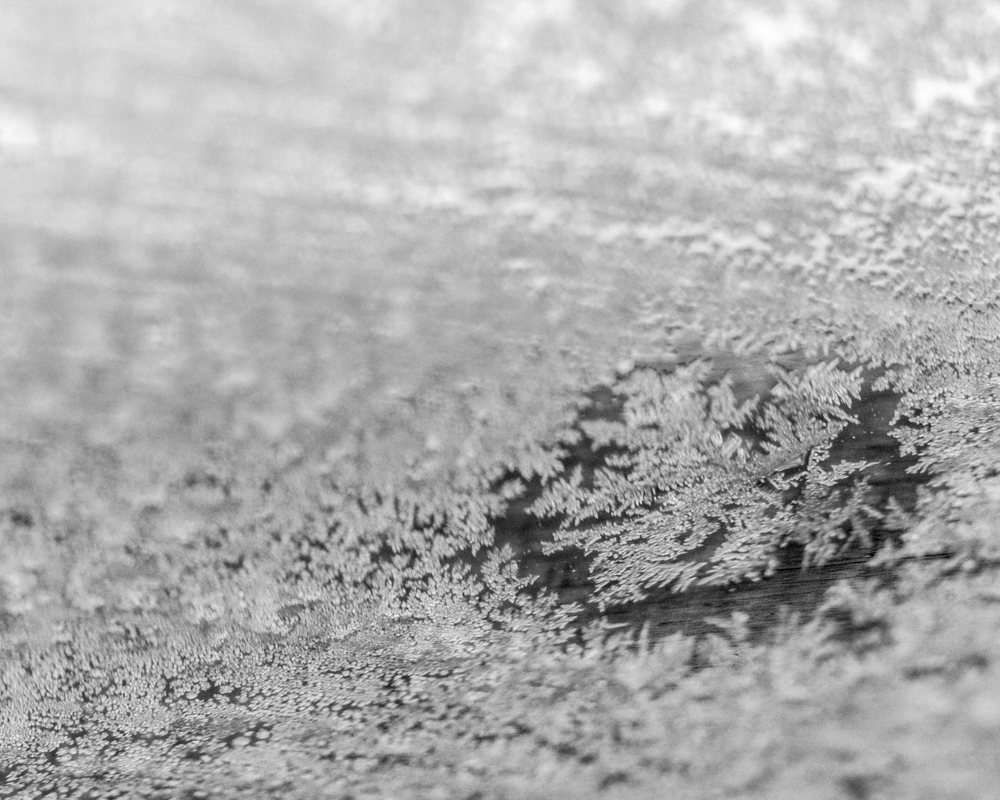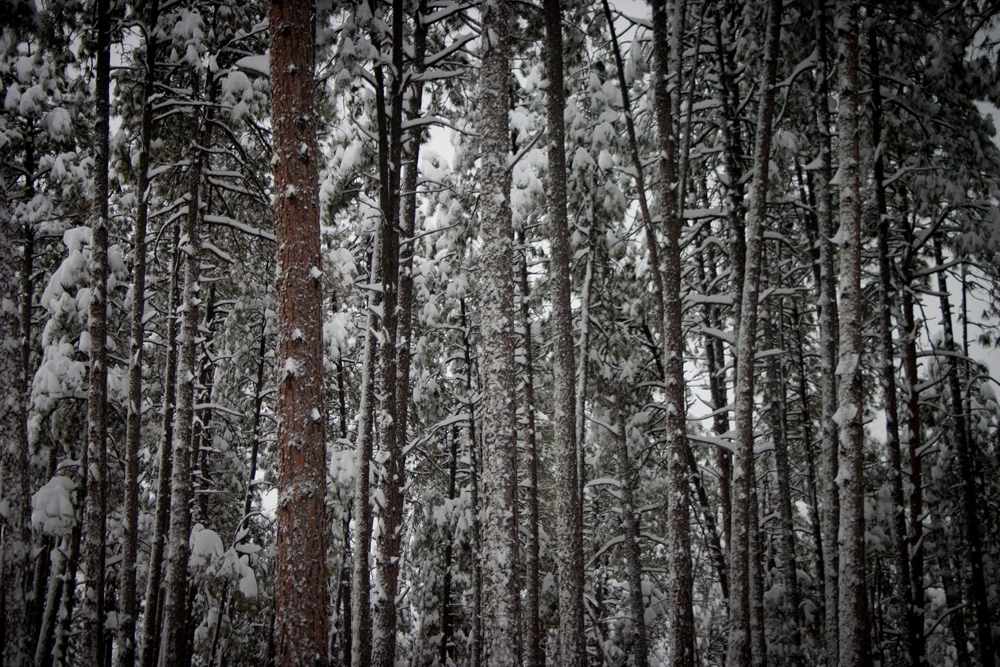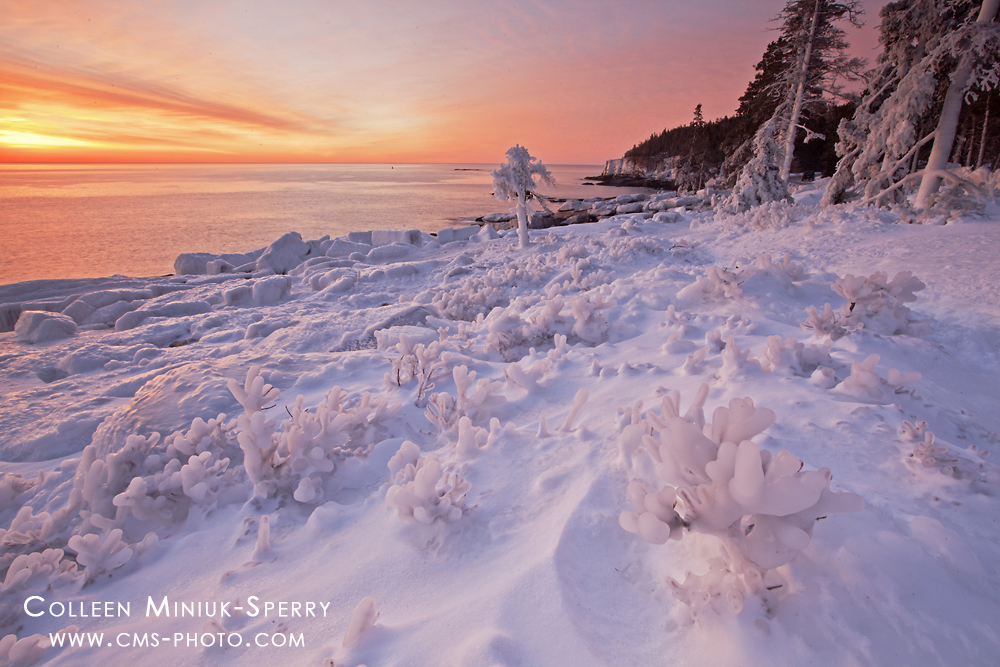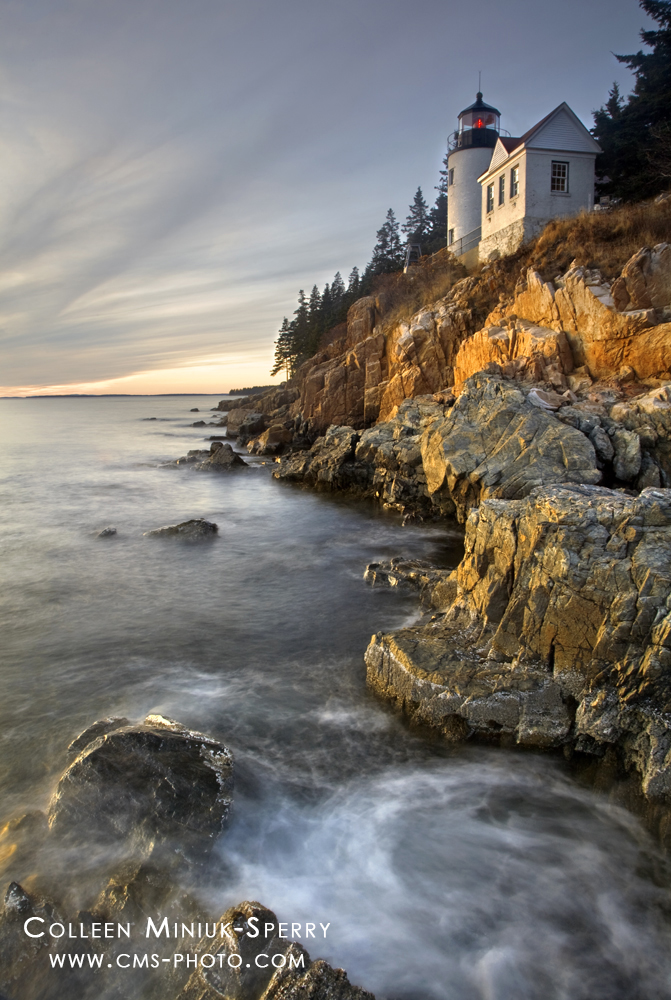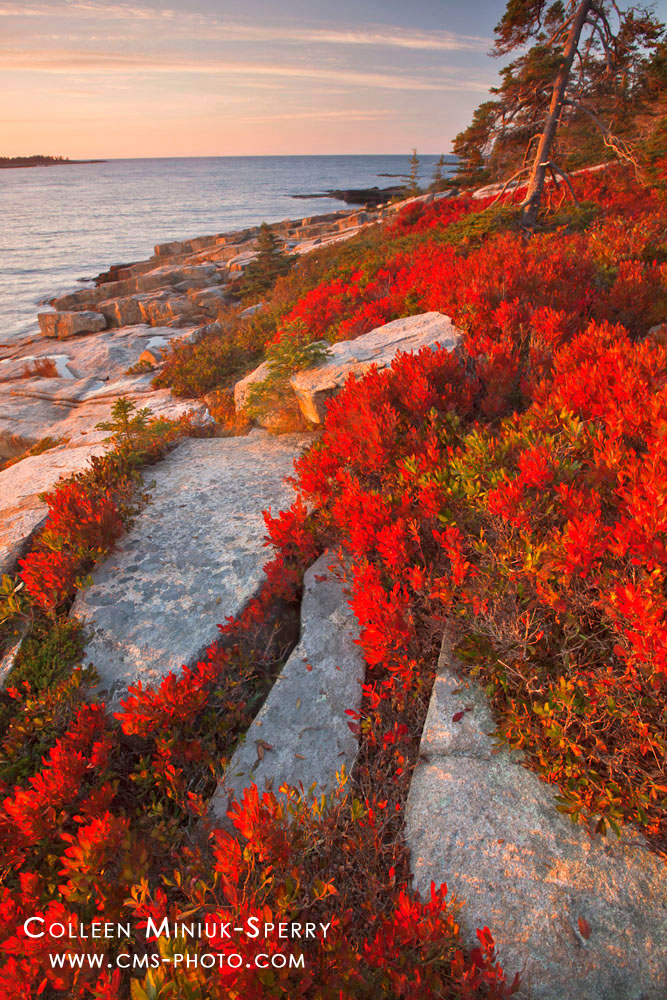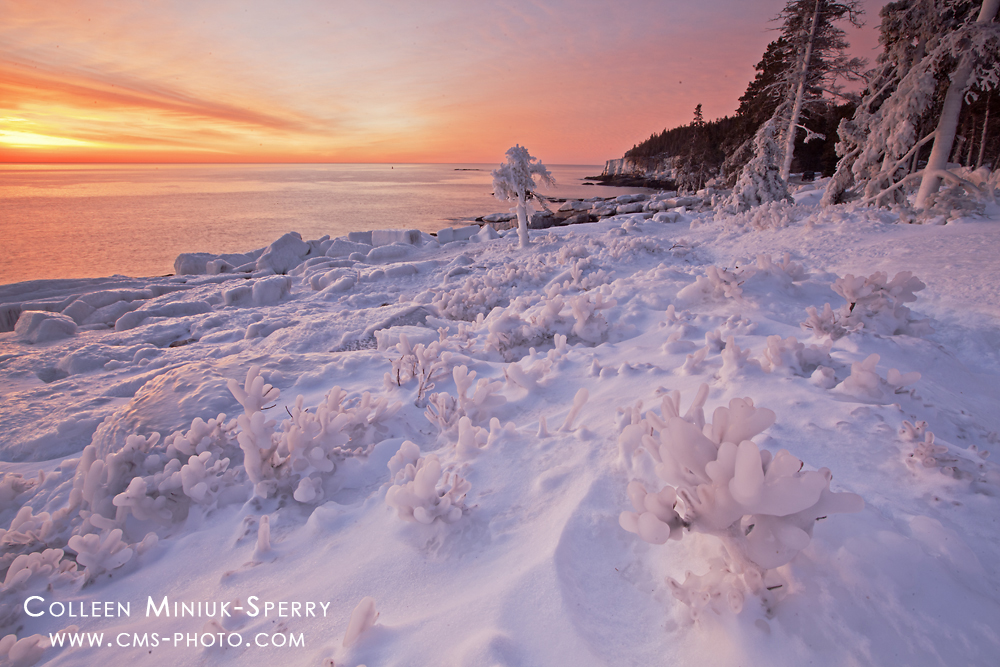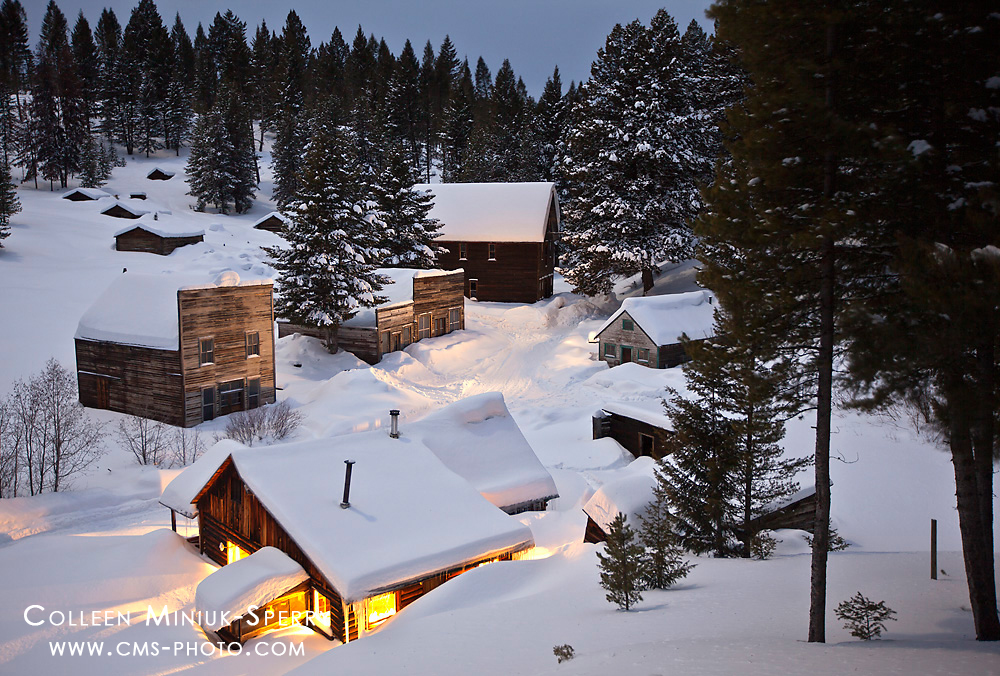
Main Street during winter in Garnet Ghost Town, Montana. The bottom, illuminated cabin is Dahl’s Cabin. From left to right, the building directly across from Dahl’s Cabin is Kelley’s Saloon, then Davey’s General Store , and then the JK Wells Hotel. Miner’s cabins are behind these buildings. The white building with teal trim in front of the store and hotel was originally the Dahl Saloon, but now serves as the Garnet Visitor Center. (Prints available – click on photo to order!)
For some married couples, spending the holidays with the in-laws is more intolerable than getting four wisdom teeth pulled simultaneously without anesthetic. Me? I lucked out. I love hanging out with my in-laws. When my husband, Craig, and I prepare to make our drive from Chandler, Arizona to Missoula, Montana at Christmastime, I eagerly pack my bags in anticipation of insightful conversations, hearty laughs, and much needed rest and relaxation.
Leaving our hectic hometown lives behind, we heed the famous advice, “when in Rome, do as the Romans do” as soon as we pass through the blue-stained-pine door at the Sperry household. Time means something different in Montana. No one rushes to do anything. Except me, I rush to do nothing.
Hugs and pleasantries exchanged, chilly hands happily greet bottomless cups of fresh brewed coffee as we start indulging in heart-to-hearts about where life has taken us since our last visit or phone call. Gathered around the den’s gas heater pumping out warmth for the entire house, no one in the Sperry family thinks twice when the person sitting closest to the radiant heat falls asleep during someone else’s intriguing story. In fact, these ad-hoc naps next to the hearth happen so frequently, it’s become a much photographed Christmas tradition, usually involving fake raccoon caps and other novelty props.
Conversation eventually slows. Then, books from bookshelves against every free inch of wall fall into the eager hands of my father-in-law, two brother in-laws, their wives, one niece, three nephews, my husband and me. Occasionally, the youngsters interrupt, challenging the adults to a game of Clue or a match of pretend sword-fighting. We celebrate our wins and recover from our losses in the same way, by pouring another cup of coffee and staring out the large picture windows watching the gently falling snow.
After three days of this peaceful Montana rhythm, thoughts of chewing my arm off enter my brain. Filled with endless energy, I almost explode like a vigorously shaken can of beer. Typically, I cope with my restlessness by throwing on winter clothes and disappearing outside alone to photograph the resident white tail deer feeding within arm’s reach of the porch, whether the weather conditions are optimal or not for photography. Unfortunately, this solution only lasts approximately seven minutes, as the warm desert blood running through my veins begins to freeze the moment I put on a wool hat and gloves.
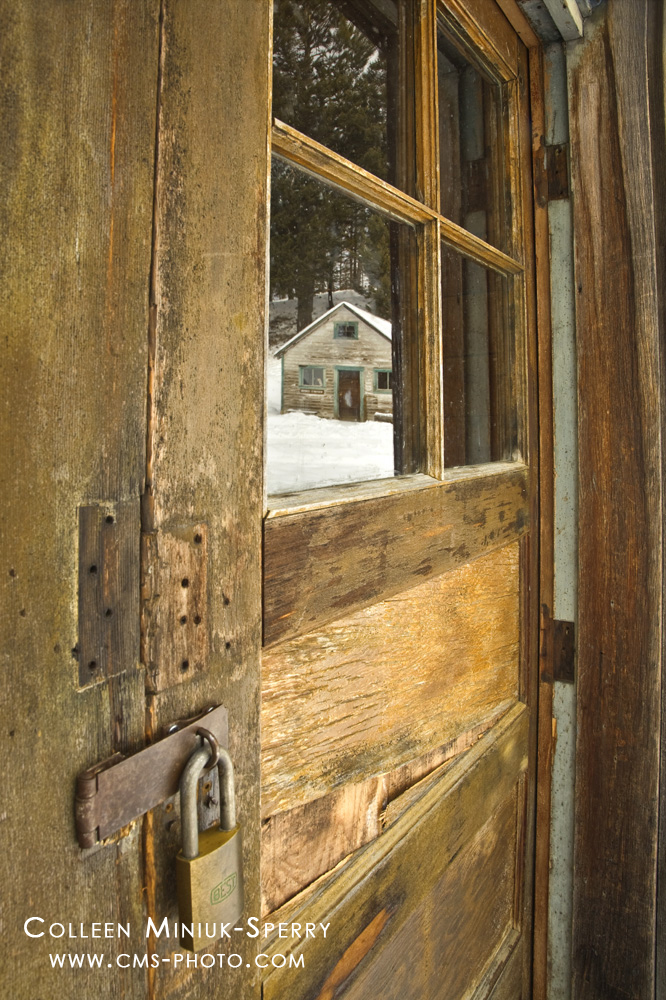
The Dahl Saloon reflected in the Kelley’s Saloon front door in the Garnet Ghost Town, Montana
During our 2009 Christmas vacation, after 72 hours, my brother-in-law thankfully suggested a family day trip to a nearby ghost town, Garnet. My father-in-law agreed, “It’s been a number of years since we’ve been up there. And we’ve only gone in the summer. It would be neat to see Garnet in the winter this time.” The promise of a little exercise, fresh air, and a new adventure to a place I had not experienced excited me.
Oh, who am I kidding, this outing was going to save my right arm!
We needed to go quickly though, as the winding road to the historic mining town is only open until January 1st to high-clearance, four-wheeled drive vehicles willing to navigate the narrow icy track carved through deep snow in the Lubrecht National Forest. Thereafter, motorized vehicles are prohibited until the beginning of May, causing those who want to see this old town tucked deep in the mountains to endure a long and laborious 11-mile snowmobile, snowshoe, or cross-country ski journey. Opting for a shorter, more comfortable excursion, after breakfast, we piled into heated vehicles aptly prepared for winter driving.
The hour-long adrenaline-inducing ride allowed me time to contemplate my love affair with ghost towns. No matter the location, the odds and hardships mining families had to overcome to have a life – not even a good life, just a life – fascinate me. Piecing together what a day might have looked like by studying what’s left behind intrigues me. It’s the “town” in ghost towns then, not the “ghost,” that brings out the curiosity in me.
That said, I’d call myself a “skeptical believer.” I’ve never fully accepted that ghosts exist, but I’ve also not dismissed the notion, for a lingering childhood fear that the boogie-man (or far worse) might one day emerge from the abyss called my closet and chase me down the hallway while mournfully wailing, “Wooooo! Woooooo!” the second I formally shun them.
In my 37 years, I’ve only experienced two situations I couldn’t explain, but I have always hesitated to blame paranormal phenomena for the lights suddenly turning off in my apartment during my senior year in college or the smell of rich cigar smoke being blown into my face five years ago at the infamously haunted Copper Queen Hotel in Bisbee, Arizona. As with the flashy special effects featured on the “Pirates of the Caribbean” ride at Disneyland, I have nonchalantly attributed both mysterious circumstances to the sly actions of the property management delivering supposed hauntings on precise cue.
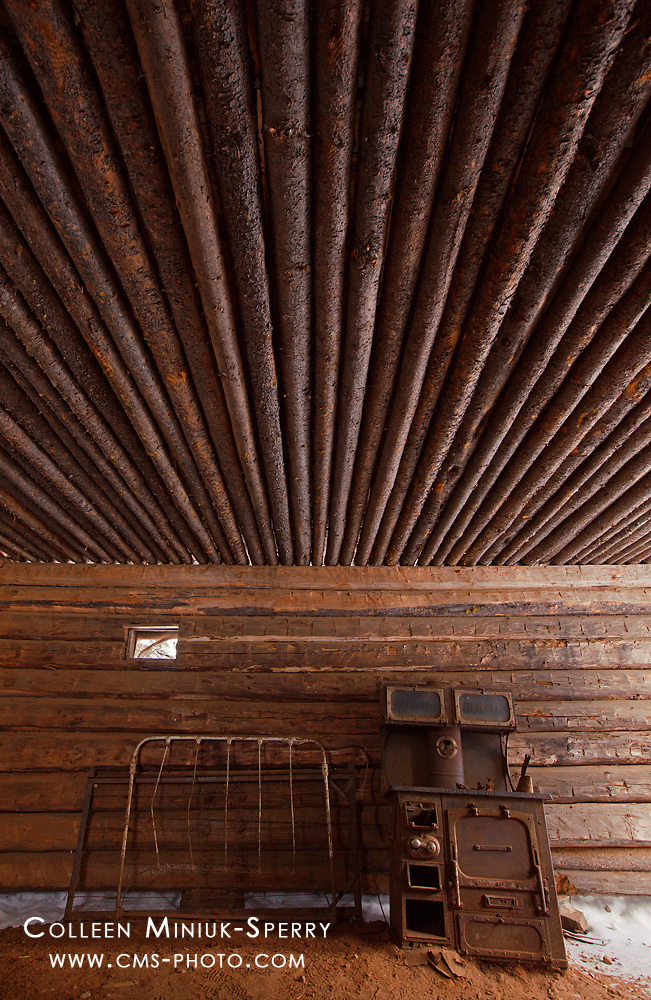
Old bed frame and stove rest inside the Garnet jail, built in 1897, in the Garnet Ghost Town, Montana, USA. (Prints available – click on photo to order!)
With buildings buttoned up and lower visitation during the winter months, the likelihood of such pranks occurring during our Garnet visit was low. So low such that the only spirit I thought about as we pulled into the snow-covered parking lot was how much of it the past inhabitants must have possessed to tolerate such isolation to survive here at the turn of the 20th century.
Like so many other ambitious gold-seeking pioneers rushed to booming Western mining towns starting in the mid-1800’s, hardy men flocked to the Garnet Range once a rich ore vein was discovered in the Nancy Hanks Mine in 1895, marking the birth of the bustling town of Garnet. However, instead of bringing gambling, prostitution, and gun fights, these miners brought families with them and picnics, social dances, and sledding parties were common here, unlike the traditional mining camps across the West.
The town quickly swelled to over 1000 residents, and in its heyday, according to the Bureau of Land Management’s (BLM) brochure, “Four stores, four hotels, three livery stables, two barber shops, a union hall, a butcher’s shop, a candy shop, a doctor’s office, an assay office, numerous miner’s cabins, 13 saloons, and a school with 41 students comprised the town.”
The classic boom-and-bust cycle caused hasty construction followed by eventual abandonment, and over time, Mother Nature or various fires destroyed many of the empty, foundation-less buildings. However, now on the National Historic Register and widely considered to be Montana’s best preserved ghost town thanks to efforts of the BLM and the Garnet Preservation Association, the handful of remaining structures continue to attract families from across the world to taste a bit of history.
After descending the short half-mile plowed path to reach Garnet’s main street, my in-laws and I immediately peered inside windows and stepped into different miner’s cabins scattered across the snowy hillside to catch a glimpse of what was left behind. Curled bed frames in corners, rusted stoves on dirt floors, and tattered newspaper on the walls provided evidence of the good old days in Garnet…and a solemn reminder of how life must have been better somewhere else.
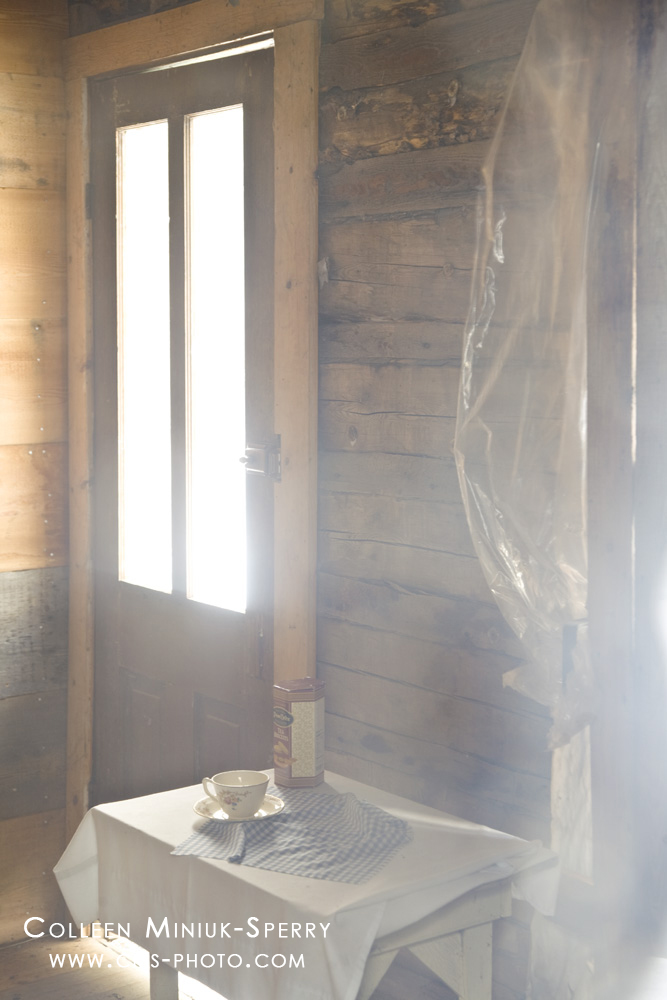
Inside the Adams house. I used a “spooky” filter, (aka a shower cap) over my lens to render a hazy effect.
Captivated by the log cabin construction and mining relics gracing the exterior of one of the homes, I stayed behind at Dahl’s Cabin while the rest of the Sperry crew continued wandering around the rest of the well-preserved settlement together. Hoping to evoke the feeling of spookiness in my photographs – after all this was a ghost town – I used icicles dangling from the Dahl’s Cabin to frame the distant Bill Hubner cabin (now the BLM Staff Office) a few hundred feet to the west. Quick glances at my camera’s LCD showed the softening and hazy effect I was striving for wasn’t panning out. I tried getting closer to the icicles such that they were essentially touching my lens, but that resulted in severe lens flare, circles that appear in an image when the sun reflects directly into the camera lens. Dissatisfied with my execution, I left to investigate the other remarkable structures and to photograph my brother-in-law and his daughter sledding in between reconstructed remnants of Davey’s Store and the J.H. Wells Hotel to cap off an enjoyable family adventure.
With little fanfare, we quietly returned to the Sperry home in Missoula to the ceremonial coffee, conversation, and nap-inducing heater. That evening, I uncharacteristically began the tedious editing process on my photographs from our visit. With Craig peering over my right shoulder, I quickly displayed one by one my images on my laptop screen.
Mid-way through our evaluation, in an overly enthusiastic display of interest in my work, Craig barked, “Wait! Go back. There’s a face in that picture!”
Sure enough, two manly eyes stared back at me in a poorly executed photograph I would normally delete due to lens flare. I’m an ex-software engineer and a professional photographer. I can explain this logically. Inadvertently kicking over my coffee mug, I shook my head in disbelief. I hadn’t seen a ghost there, but my camera had? (Image #1)
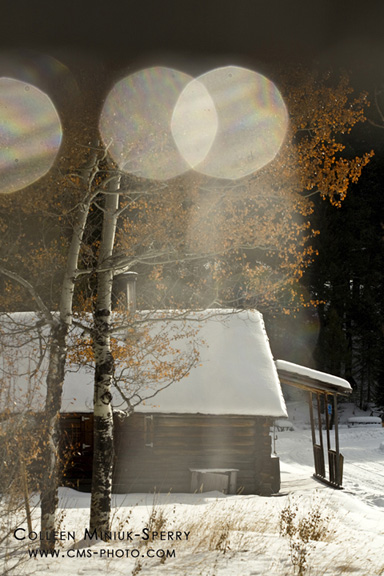
Image #1: The un-manipulated, un-touched photograph out of my camera. The face is is visible on the right side of the photograph in the trees just above the cabin roof line but below the lens flare circles. It may help to step back about 10-15 feet if you have difficulty seeing it.
The Sperry clan hovered around the laptop and collectively dissected not only the photograph with the face, but also the entire series of images captured before and after. Everyone created their own viable explanation of how my camera and I could have captured a distinct face. After a day’s worth of on and off reviews and deliberations, we decided there was only one way to know if the face in the photograph was of ghostly origins. We must return to Garnet. Immediately.
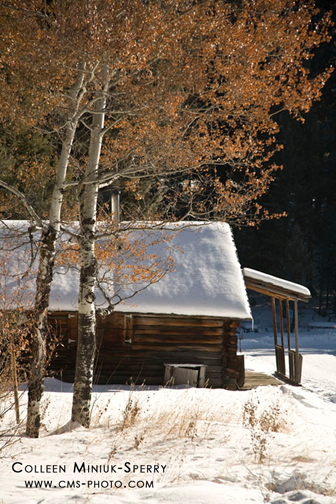
Image #2: The closest I could get to recreating the scene on our second visit to Garnet.
Craig and I massaged our plans to return to Arizona so that we could revisit the ghost town the morning of our scheduled departure with my father-in-law. Upon our return, I rushed to the exact spot I captured the ghostly photograph even though the Dahl’s Cabin – which is available for overnight rentals in the winter – was now occupied by a family of snowshoe-enthusiasts. Trying not to disturb them as I climbed up the stack of logs on their porch as they peered out the window at me, I snapped several pictures using the printed photograph as my guide. I immediately evaluated each picture on the back of my digital camera. No face. Look at the print. Recompose from a different angle and position. Click! Evaluate, no face, look at print, recompose, click! Repeat. Same time of day, same type of light, but this time, no icicles dripping from the roof. (Image #2)
After about a half-hour, I gave up and joined Craig and his Dad at the small Visitor’s Center, which welcomes guests only on weekends in the wintertime. The burly, no-nonsense ranger on duty – the kind of ranger you’d expect to find in the backcountry of Montana – warmly greeted us with a jolly smile. Hesitant to blurt out the real reason for our visit, we instead made casual conversation about the town’s history, the details of the displayed artifacts, and ho-hum, the likelihood of seeing ghosts in town during our visit.
“Oh yeah, I see photos all the time from lots of people who have supposedly seen ghosts here,” he sighed, rolling his eyes. “But none of them are terribly convincing.”
“Well, would you mind taking a look at this picture?” I asked, sheepishly pulling the folded photograph from my back pocket, “I’d like to see what you think of this photo I took two days ago off the porch of Dahl’s Cabin.”
I felt like an idiot until I saw his eyes widened and he covered his mouth with his right hand. “I know exactly who that is,” he gasped, “I’m not a believer, but that right there, I might have to start believing. Follow me.”
Our curiosity compelled us to follow with lead feet as the ranger led us to the Hubner Cabin. Inside, he hurriedly sorted through stacks of interpretative signs resting against the log walls.
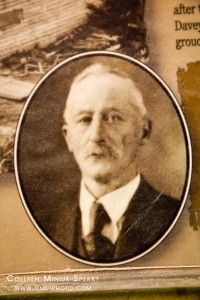
Portrait of Frank Davey on an interpretative sign
“Here, here it is,” he exclaimed, handing me a laminated sign featuring a historical photograph of an older gentleman. I quickly snapped images of the formal portrait as the ranger revealed, “His name is Frank Davey.”
Around 1895, an astute businessman named Frank Davey filed on the Garnet mining claim. Although little information exists about his previous life prior to his arrival in the mining town, he purchased a store he later named “Davey’s General Merchandise Store” in 1898. This mysterious man occasionally mined for gold alongside the other hard working miners but kept busy running the Garnet Stageline, managing his general store, and overseeing much of the land on which Garnet was developed.
Though certainly an asset to his town, the resident children didn’t think highly of him. In an interview conducted in June 2000, Frank Fitzgerald, who spent his childhood in Garnet, revealed, “Davey was kind of growly.” Lois Gates, who attended grade school in Garnet from 1935-1939, remembered him as “a scary old man” during an interview in March 2002. According to historical accounts from Lester Robinson, who moved to Garnet in 1937 when he was 10 years old, many people called Davey “Old Hurry” after frequently rushing patrons through his store.
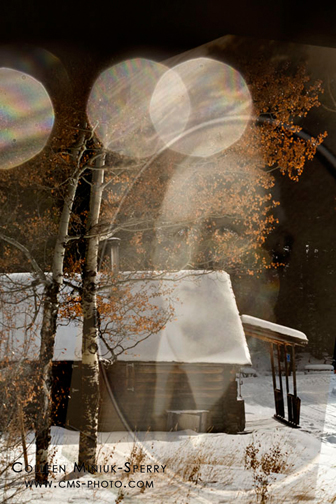
Image #3: The combination of the two images overlaid in Photoshop.
By the late 1930’s, though, people started leaving Garnet to support World War II efforts. Davey strangely stayed behind. Considered the last man standing in Garnet, Davey collapsed while surveying his mining claim in the fall of 1947. Penniless at his death, the Elk Club buried Davey in Missoula. September 22, 1947 marked the birth of the ghost town of Garnet.
Absorbing these new details from our second visit, Craig and I hopped in our car and anxiously headed home to Arizona. When I returned to desert, I quickly pulled up both images on my desktop computer and then used Adobe Photoshop to overlay the photograph I captured of Davey’s formal portrait photo on top of my photograph of the face (image #3). I turned the portrait slightly to match the direction of the man’s gaze in my photograph. The ranger was right. It was Frank Davey.
Not quite able to get the ghost image out of our minds, Craig and I returned to Garnet in February 2011, skiing the infamous China Grade (Montana’s steepest commercial road) while dragging 100 pounds of gear (affectionately referred to as the “Dead Body”) to stay three nights in Dahl’s Cabin in hopes of meeting Frank. But that another story for another time…
Almost three years have passed since we saw what the Sperry family calls “the ghost of Garnet,” and still today, many of our conversations include some aspect of our experience. We chuckle with pride after hearing how my niece wowed her grade school class with the photograph and story during a weekly “Show-and-Tell.” My now-five-year old nephew added the word “creepy” into his vocabulary and does not want to see the “Giant Man in the trees again.”
Though we live across the country from Washington to Virginia, Arizona to Montana, Garnet has brought us closer together as a family despite our distance. And although Frank Davey may go by many names, including “Old Hurry” and “Giant Man,” to us, he’ll always be our “Spirit of Christmas.”
For additional information about the Garnet Ghost Town please visit www.garnetghosttown.net
The Outdoor Writers Association of America awarded this blog entry First Place in the “Outdoor Fun & Adventure” category in the 2013 Excellence in Craft awards.
